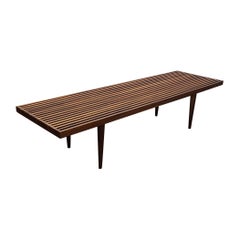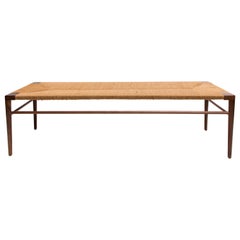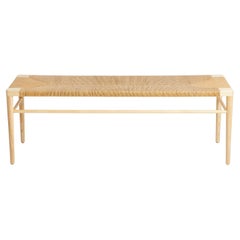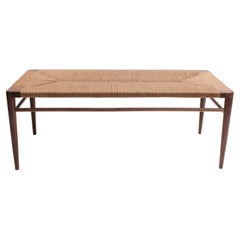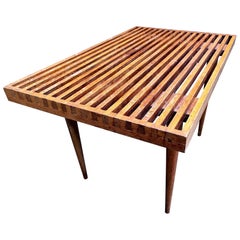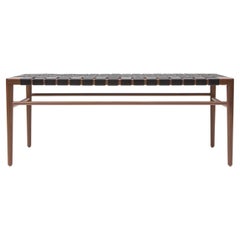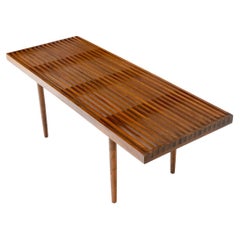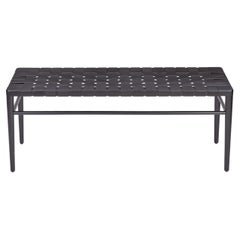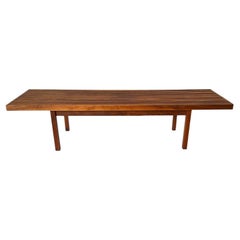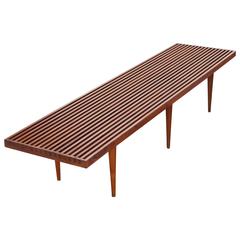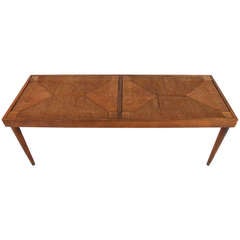Smilow Bench
Vintage 1960s American Mid-Century Modern Benches
Walnut
21st Century and Contemporary American Mid-Century Modern Benches
Rush, Walnut
21st Century and Contemporary American Mid-Century Modern Benches
Rush, Ash
21st Century and Contemporary American Mid-Century Modern Benches
Rush, Ash
21st Century and Contemporary American Mid-Century Modern Benches
Rush, Walnut
Vintage 1950s American Mid-Century Modern Benches
Wood
21st Century and Contemporary American Mid-Century Modern Benches
Leather, Walnut
21st Century and Contemporary American Mid-Century Modern Benches
Leather, Walnut
20th Century American Mid-Century Modern Benches
Walnut
21st Century and Contemporary American Mid-Century Modern Benches
Leather, Ash
21st Century and Contemporary American Mid-Century Modern Benches
Leather, Ash
Mid-20th Century Benches
Walnut
Vintage 1960s American Mid-Century Modern Benches
Wood
Mid-20th Century American Mid-Century Modern End Tables
Walnut
20th Century American Mid-Century Modern End Tables
Walnut
Recent Sales
Vintage 1950s American Mid-Century Modern Benches
Walnut
Vintage 1970s American Mid-Century Modern Benches
Rush
21st Century and Contemporary American Mid-Century Modern Benches
Rush, Walnut
Vintage 1960s American Mid-Century Modern Benches
Walnut
Mid-20th Century American Mid-Century Modern Benches
Walnut
20th Century American Mid-Century Modern Coffee and Cocktail Tables
Mid-20th Century American Mid-Century Modern Coffee and Cocktail Tables
Walnut
20th Century American Mid-Century Modern Benches
Vintage 1950s American Mid-Century Modern Benches
Walnut
Mid-20th Century American Mid-Century Modern Benches
Walnut
Vintage 1950s American Mid-Century Modern Benches
Metal
21st Century and Contemporary American Mid-Century Modern Benches
Rush, Ash
21st Century and Contemporary American Mid-Century Modern Benches
Rush, Ash
20th Century American Mid-Century Modern Benches
Walnut
20th Century American Mid-Century Modern Benches
Teak
Vintage 1950s American Mid-Century Modern Coffee and Cocktail Tables
Walnut
Vintage 1950s American Mid-Century Modern Coffee and Cocktail Tables
Wood, Walnut
20th Century American Mid-Century Modern Coffee and Cocktail Tables
Vintage 1950s American Mid-Century Modern Coffee and Cocktail Tables
Walnut
Mid-20th Century American Mid-Century Modern Coffee and Cocktail Tables
Walnut
Mid-20th Century American Mid-Century Modern Coffee and Cocktail Tables
Walnut
Mid-20th Century American Mid-Century Modern Coffee and Cocktail Tables
Walnut
Mid-20th Century Unknown Mid-Century Modern Coffee and Cocktail Tables
Walnut
Vintage 1960s American Mid-Century Modern Coffee and Cocktail Tables
Wood
Vintage 1960s Serbian Mid-Century Modern Coffee and Cocktail Tables
Beech
Vintage 1950s American Benches
Vintage 1950s American Mid-Century Modern Benches
Walnut
Vintage 1950s American Mid-Century Modern Benches
Walnut
2010s American Mid-Century Modern Benches
Rush, Walnut
Vintage 1950s American Mid-Century Modern Benches
Walnut
Vintage 1950s American Mid-Century Modern Chairs
Vintage 1950s American Mid-Century Modern Benches
Vintage 1950s American Benches
Wood
21st Century and Contemporary American Benches
Rush, Walnut
Vintage 1950s American Mid-Century Modern Benches
Walnut
2010s American Benches
Rush, Walnut
2010s American Mid-Century Modern Benches
Ash
2010s American Mid-Century Modern Benches
Ash
Mid-20th Century American Mid-Century Modern Coffee and Cocktail Tables
Walnut
People Also Browsed
Vintage 1950s Italian Mid-Century Modern Table Lamps
Metal, Brass
Vintage 1960s American Mid-Century Modern Benches
Maple, Lacquer
21st Century and Contemporary American Wall Lights and Sconces
Metal, Brass, Nickel
21st Century and Contemporary American Wall Lights and Sconces
Brass
2010s American Mid-Century Modern Chandeliers and Pendants
Brass, Aluminum, Nickel, Chrome, Enamel, Bronze
2010s South African Minimalist Pedestals
Hardwood
21st Century and Contemporary American Wall Lights and Sconces
Brass, Metal
21st Century and Contemporary Swedish Mid-Century Modern Table Lamps
Textile
21st Century and Contemporary American Minimalist Stools
Oak
Vintage 1970s American Chinese Chippendale Benches
Wood, Faux Bamboo
2010s British Scandinavian Modern Tables
Mohair, Oak
21st Century and Contemporary Mexican Mid-Century Modern Table Lamps
Fiberglass, Linen, Fabric, Wood
2010s Italian Modern Chandeliers and Pendants
Metal, Brass
2010s American Mid-Century Modern Wall Lights and Sconces
Brass, Nickel, Enamel, Bronze
21st Century and Contemporary American Mid-Century Modern Flush Mount
Brass, Metal
Vintage 1930s Austrian Art Deco Chandeliers and Pendants
Brass
Smilow Bench For Sale on 1stDibs
How Much is a Smilow Bench?
Mel Smilow for sale on 1stDibs
“Enduring, modern and classic” is how mid-century modern furniture designer Mel Smilow used to describe his chairs, benches, coffee tables and other pieces, which were not only functional and durable but were designed to become timeless heirlooms for American families.
Smilow was born in the Bronx, New York, and, in 1939, attended Pratt Institute, where he studied to become a commercial artist. However, his father’s death forced him to discontinue his schooling and, at the age of 17, he took over his father’s role as a wholesale furniture salesman.
Following his stint in the army during World War II, Smilow partnered with colleague Morton Thielle in 1949 to form the furniture manufacturer and retailer Smilow-Thielle. Although they had planned to sell quality furniture made by American manufacturers, Smilow was unsatisfied with their designs and became Smilow-Thielle’s chief designer.
Throughout the 1950s and 1960s, Smilow used a variety of American hardwoods such as walnut, beech and oak for his benches, lounge chairs, sofas, table lamps, coffee tables, and other furnishings. One of his more popular designs was the Floating Platform bed — John Lennon and Yoko Ono owned one.
Although Smilow intended his designs to be comfortable and affordable for the “average American family,” his work was defined by the clean lines, delicate construction and symmetry often seen in Scandinavian modernist or Japanese furniture, and it drew attention and acclaim from designers and critics.
For instance, Buckminster Fuller placed Smilow’s rocking chairs in the geodesic dome he designed as the U.S. pavilion for Expo 1967, in Montreal, and Pratt Institute featured his ottoman as part of an exhibition of “well-designed furniture for under $25.” The New York Times, the New Yorker magazine and William Hennessey’s book Modern Furnishings for the Home also featured Smilow’s furniture.
Smilow-Thielle operated retail locations in the New York metro area as well as in Washington, D.C., with the firm’s flagship store occupying prime real estate on Lexington Avenue in Manhattan for several decades. Smilow’s designs have been likened to those of Jens Risom and Børge Mogensen and certainly wouldn’t have looked out of place in a Herman Miller showroom in the postwar era, but they have distinctive joinery details and a quiet strength that make them unique.
In 1969, Smilow and Thielle ended their partnership, with Smilow retaining sole company ownership. In 1981, Smilow retired and closed the business, turning his attention toward sculpting, painting and printmaking.
Although he died in 2002, Smilow’s legacy of furniture-making has lived on. His daughter, Judy, formed Smilow Design in 2013, which carries on her father’s tradition of creating “enduring, modern and classic” designs. Following Judy’s death of ALS in 2018, the company has been run by her husband, Steven Schoenfelder and her two children, who are still managing the brand today.
On 1stDibs, find a range of vintage Mel Smilow seating, tables and lighting.
A Close Look at Mid-century-modern Furniture
Organically shaped, clean-lined and elegantly simple are three terms that well describe vintage mid-century modern furniture. The style, which emerged primarily in the years following World War II, is characterized by pieces that were conceived and made in an energetic, optimistic spirit by creators who believed that good design was an essential part of good living.
ORIGINS OF MID-CENTURY MODERN FURNITURE DESIGN
- Emerged during the mid-20th century
- Informed by European modernism, Bauhaus, International style, Scandinavian modernism and Frank Lloyd Wright’s architecture
- A heyday of innovation in postwar America
- Experimentation with new ideas, new materials and new forms flourished in Scandinavia, Italy, the former Czechoslovakia and elsewhere in Europe
CHARACTERISTICS OF MID-CENTURY MODERN FURNITURE DESIGN
- Simplicity, organic forms, clean lines
- A blend of neutral and bold Pop art colors
- Use of natural and man-made materials — alluring woods such as teak, rosewood and oak; steel, fiberglass and molded plywood
- Light-filled spaces with colorful upholstery
- Glass walls and an emphasis on the outdoors
- Promotion of functionality
MID-CENTURY MODERN FURNITURE DESIGNERS TO KNOW
- Charles and Ray Eames
- Eero Saarinen
- Milo Baughman
- Florence Knoll
- Harry Bertoia
- Isamu Noguchi
- George Nelson
- Danish modernists Hans Wegner and Arne Jacobsen, whose emphasis on natural materials and craftsmanship influenced American designers and vice versa
ICONIC MID-CENTURY MODERN FURNITURE DESIGNS
- Eames lounge chair
- Nelson daybed
- Florence Knoll sofa
- Egg chair
- Womb chair
- Noguchi coffee table
- Barcelona chair
VINTAGE MID-CENTURY MODERN FURNITURE ON 1STDIBS
The mid-century modern era saw leagues of postwar American architects and designers animated by new ideas and new technology. The lean, functionalist International-style architecture of Le Corbusier and Bauhaus eminences Ludwig Mies van der Rohe and Walter Gropius had been promoted in the United States during the 1930s by Philip Johnson and others. New building techniques, such as “post-and-beam” construction, allowed the International-style schemes to be realized on a small scale in open-plan houses with long walls of glass.
Materials developed for wartime use became available for domestic goods and were incorporated into mid-century modern furniture designs. Charles and Ray Eames and Eero Saarinen, who had experimented extensively with molded plywood, eagerly embraced fiberglass for pieces such as the La Chaise and the Womb chair, respectively.
Architect, writer and designer George Nelson created with his team shades for the Bubble lamp using a new translucent polymer skin and, as design director at Herman Miller, recruited the Eameses, Alexander Girard and others for projects at the legendary Michigan furniture manufacturer.
Harry Bertoia and Isamu Noguchi devised chairs and tables built of wire mesh and wire struts. Materials were repurposed too: The Danish-born designer Jens Risom created a line of chairs using surplus parachute straps for webbed seats and backrests.
The Risom lounge chair was among the first pieces of furniture commissioned and produced by celebrated manufacturer Knoll, a chief influencer in the rise of modern design in the United States, thanks to the work of Florence Knoll, the pioneering architect and designer who made the firm a leader in its field. The seating that Knoll created for office spaces — as well as pieces designed by Florence initially for commercial clients — soon became desirable for the home.
As the demand for casual, uncluttered furnishings grew, more mid-century furniture designers caught the spirit.
Classically oriented creators such as Edward Wormley, house designer for Dunbar Inc., offered such pieces as the sinuous Listen to Me chaise; the British expatriate T.H. Robsjohn-Gibbings switched gears, creating items such as the tiered, biomorphic Mesa table. There were Young Turks such as Paul McCobb, who designed holistic groups of sleek, blond wood furniture, and Milo Baughman, who espoused a West Coast aesthetic in minimalist teak dining tables and lushly upholstered chairs and sofas with angular steel frames.
Generations turn over, and mid-century modern remains arguably the most popular style going. As the collection of vintage mid-century modern chairs, dressers, coffee tables and other furniture for the living room, dining room, bedroom and elsewhere on 1stDibs demonstrates, this period saw one of the most delightful and dramatic flowerings of creativity in design history.
Finding the Right Benches for You
Don’t underestimate a good bench — antique and vintage benches are storage pieces, stylish accents and statement-making additional seating.
Today, benches are a great option to maximize seating in your house and outdoor space. The perfect option to create a warm, welcoming atmosphere in foyers and entryways, benches can also transform dining areas, making it possible to host a hungry family with limited space. Whether you’re sprucing up your entertaining with upholstered Empire-style benches or adding more options to a dining room that’s seen a farmhouse makeover, this humble furnishing has only become more versatile over the years. Designers have recognized the demand for a good bench, crafting the convenient seating alternative from a range of materials, including wood, iron and even concrete.
Mid-century modern benches from George Nakashima, Charlotte Perriand and the pared-down Platform bench by George Nelson for Herman Miller are classics of innovation, but maybe you’re looking for an unconventional design approach to your home's seating. Opt for something totally outside the box — an antique pine church-pew bench paired with a vintage wool throw and stationed under the mounted coatrack in your mudroom is a distinctive touch.
For your outdoor oasis, a wrought-iron patio bench is the obvious choice but not the only option. An enclosed back patio would do well to inherit a rattan bench with cushions, but it can be susceptible to weathering and should be covered or moved indoors when not in use.
Whatever your seating arrangement needs are, find vintage, new and antique benches for every space on 1stDibs.
